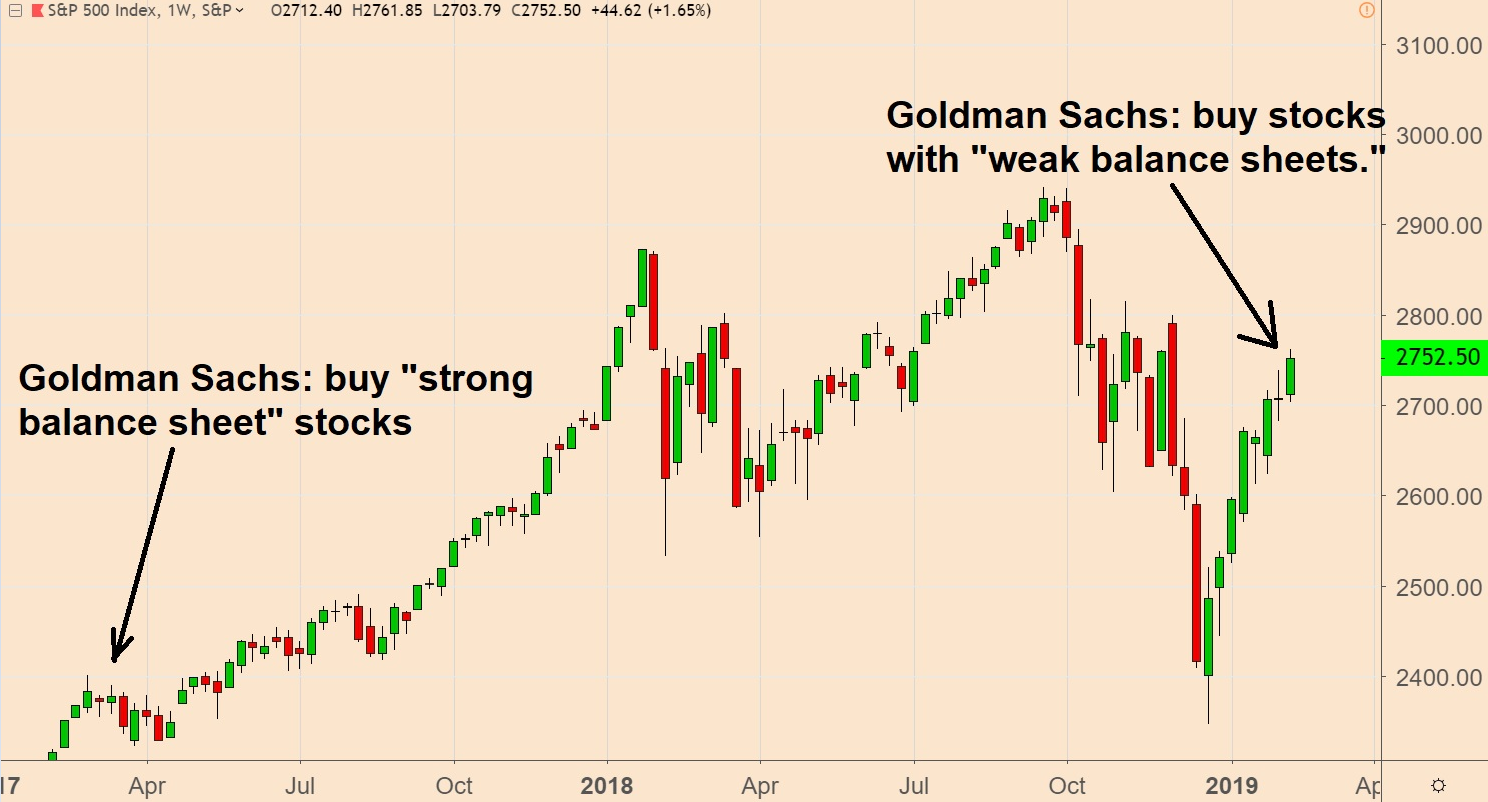It was a lesson I learned early as a financial reporter and investor…
Wall Street is a fashion business.
In other words, whatever happens to sell now — tech unicorns, social media stocks, whatever — it’s for sure what Wall Street’s legion of strategists will push on their customers (and on television).
I used to get an up-close look at this phenomenon as a stock reporter. I’d interview someone from a major investment bank and ask his favorite sector. He’d say “big caps” and reel off a few obvious names.
I’d have him on my TV program months later. Suddenly big caps were passé. He was on to some other favorite idea.
But for individual investors like ourselves, following the whims of Wall Street is dangerous to our financial health.
That’s never been truer than today with a rising stock market — and investment banks changing their tune to fit the times (i.e., what’s fashionable).
Goldman Sachs’ Bad Idea
Last week a Goldman Sachs equities strategist reversed his advice of the last few years. He said: Don’t buy “strong balance sheet” companies (meaning companies with profits, little debt and good cash flow).
Instead, buy “weak balance sheet” stocks.
The gist of the idea is, the Federal Reserve is now standing pat on interest rates.
For companies carrying lots of debt, a hiatus on higher interest rates makes the carrying charges on their debt more affordable (and presumably peps up their stock price, too).
That’s a bad idea.
It will work, for a time. But it’s a lot like scooping up dimes and quarters on front of a bulldozer.
It’s fun. It’s exciting. But sooner or later, you’re going to get, um … flattened.

(Source: TradingView.com)
At my newsletter, Total Wealth Insider, companies with strong (or improving) balance sheets never go out of style. I have the results to show for it, too.
The Biggest Winner
Back in 2006, a quartet of finance professors wondered if there was a way to quantify if “quality” — strong balance sheets and good cash flow — worked as well or better than other approaches to investing.
They compared it to strategies such as chasing momentum-type stocks, or buying lots of high-volatility small-cap stocks and riding them through thick and thin.
Like all approaches, each one runs hot and cold depending on the economy and the overall stock market. But the professors found that investing based on strong balance sheets and good cash flow came out the biggest winner, netting market-like returns with less risk.
That’s an important idea to keep in mind for times like now, as we watch the market move higher, and higher still.
Best of good buys,

Jeff Yastine
Editor, Total Wealth Insider




